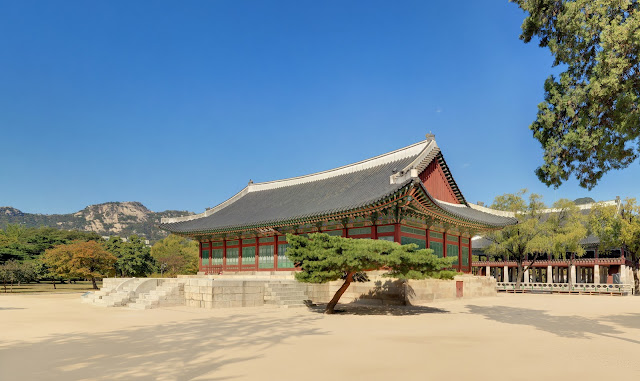Introducing the Hall of Worthies (Jiphyeonjeon)
|
Rank |
Title |
Title |
Staffing level | |
|
1 Sr. |
영집현전사=영전사 (領集賢殿事, 領殿事) |
Superintendent
(of Jiphyeonjeon) |
|
|
|
1 Jr. |
|
|
|
|
|
2 Sr. |
대제학 (大提學) |
Director |
|
|
|
2 Jr. |
제학 (提學) |
Deputy
Director |
|
|
|
3 Sr. |
부제학 (副提學) |
Assistant Director |
|
Bu-je-hak |
|
3 Jr. |
직제학 (直提學) |
Second Deputy
Director |
|
|
|
4 Sr. |
직전 (直殿)= 직집현전 (直集賢殿) |
Hall
Secretary, Advisor |
|
|
|
4 Jr. |
응교 (應敎) |
Responding
Editor |
|
|
|
5 Sr. |
교리 (校理) |
Principal
Drafter |
|
Gyo-ri |
|
5 Jr. |
부교리 (副校理) |
Second
Drafter |
|
Bu-gyo-ri |
|
6 Sr. |
수찬 (修撰) |
Sixth
Counselor |
|
Su-chan |
|
6 Jr. |
부수찬 (副修撰) |
Assistant
Sixth Counselor |
|
Bu-su-chan |
|
7 Sr. |
박사 (博士) |
Erudite |
|
|
|
7 Jr. |
|
|
|
|
|
8 Sr. |
저작 (著作) |
First Copyist |
|
|
|
8 Jr. |
|
|
|
|
|
9 Sr. |
정자 (正字) |
Proofreader |
|
|
|
9 Jr. |
|
|
|
|
Note:
The remaining positions are to be filled by officials with salaried posts (녹관 祿官.)
Academician(학사) in the Hall of Worthies- 집현전학사 (集賢殿學士)
You can see 10 staff officers (낭청 郞廳= 당하관 堂下官을 말함) are to be placed under the assistant directors.
Principal Drafter, Second Drafter, Sixth Counselor, and Assistant Sixth Counselor concurrently held the position of Assistant commentator (부검토 副檢討.)
Office of Royal Lectures (경연청 經筵廳 )
All of the Jiphyeonjeson officials concurrently hold the position of a royal lecturer (경연관 經筵官) in 1420.
경연 can be translated as Royal debates.
Also, in 1438 (the 12th year of King Sejong's reign), the number of positions was adjusted to 20. Among them, 10 officials served as royal lecturers, and the remaining 10 officials took on the role of lecturers for the Crown Prince (서연관 書筵官 Seoyeongwan.)
Furthermore, the Assistant Commentator (부검토 副檢討, Sr.5) held by the Senior 5 staff also had the title of First Secretary (司經 사경, Sr. 7) in the Office of Royal Lectures.
It's important to note that the order of the Assistant Deputy Directors was superior to that of the Censors (지사간원사 知司諫院事, 사관 司諫 Jr. 3.)
With this hierarchical structure and the combined responsibilities of the staff members, the Hall of Worthies played a crucial role in the intellectual and administrative functioning of the Joseon Dynasty.
I hope this information can be of assistance to anyone who may find it useful.

